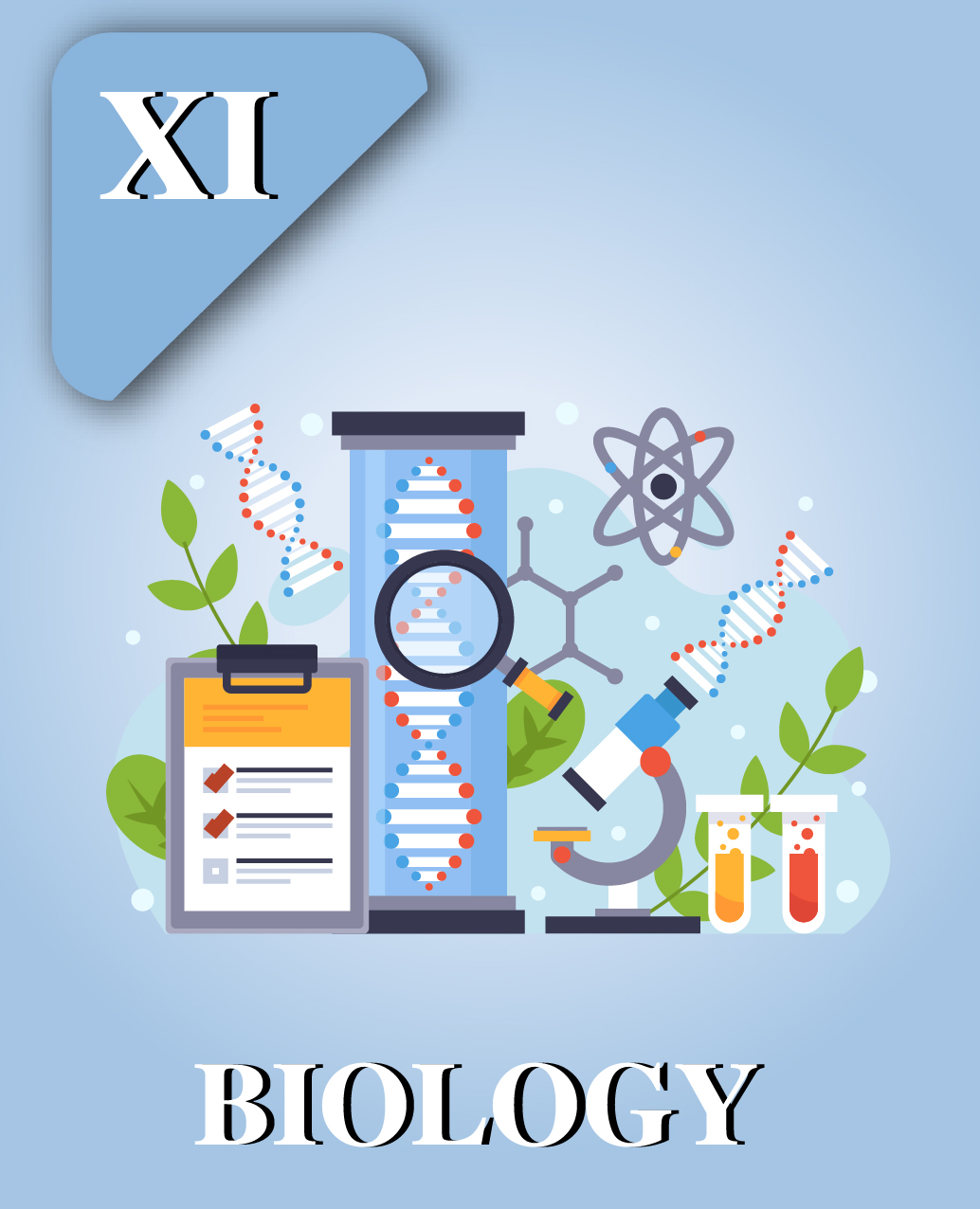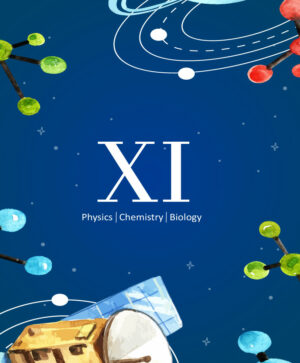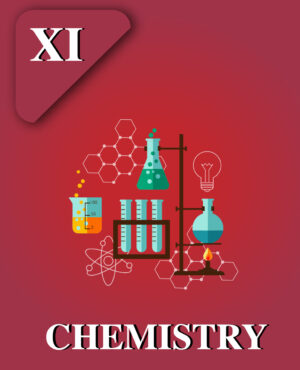About the Course
Comprehensive Biology for Class XI has been revised and updated as per the latest syllabus prescribed by CBSE. The main objective of this book is to provide the students a complete textbook as well as a reference book in such a way that they can grasp the subject with more clarity.
Sincere attempts have been made to make the subject content thorough, current, and condensed. Every effort has been made to keep the language straightforward and the presentation organized. Diagrams that are clear and instructive have been added to support the text along with topicwise videos. While the fundamentals have received a lot of attention, every attempt has been made to provide recent material in sufficient detail so that the students will have a strong foundation for competitive exams and higher education.
There are headings and subheadings for each chapter. Questions based on the standards established by various Boards are placed after each section of a chapter. To give the students a rapid recap of the section, this has been done. A special collection of questions of all kinds, including those from the Exercise with Answers, Very Short Answer Type Questions with Answers, Multiple Choice Questions with Answers, Special Questions with Answers, and Additional Objective Questions with Answers, are available at the end of each chapter.
The current edition of course is really hoped to be even more beneficial assisting students in getting ready for both the Board and competitive exams. We will warmly accept constructive critique of the subject matter and worthwhile recommendations for further developing the course.
Learning Objectives
-
- Enhancing the school based knowledge of the student at early level.
- Making the course easy and sophisticated emphasizing competency based educational process.
- With this course the learner particularly explores responds invents and bring out the meaning to the relevant things.
- Students can construct sufficient knowledge of biology
- overall holistic development of children studying the course.
- This course helps students to learn about many of the phenomena which they observe in their daily routine
Requirements
-
- Refine their literary sensibility and enrich their aesthetic life through different literary genres.
- Student should have different language notice.
- Use a dictionary or Glossary available in the courses or library to access to difficult term.
Target Audience
-
- Who is learning Biology in class XI student preparing for their Boards.
- This course mainly targets the age student preparing for some of the govt. examination particularly for teaching field
1.The Living World
What possesses life? Biodiversity; categorisation required; three life domains; systems biology and taxonomy; species theory and taxonomy hierarchy; bn nomenclature; Museums, zoological parks, herbaria, and botanical gardens are useful resources for taxonomy research.
2.Biological Classification
Salient characteristics and division of the Monera, Protista, and Fungi into three main groups: Lichens, Viruses, and Viroids, constitute the five kingdom categorization.
3.Plant Kingdom
Algae, Bryophyta, Pteridophyta, Gymnospermae, and Angiospermae (three to five salient and distinguishing features and at least two examples of each category) are the major groups of plants according to salient features and classification, while Angiosperms are classified up to the class level and have distinctive features and examples.
4.Animal Kingdom
Important characteristics and animal classification: non-chordates up to the phylum level and chordates up to the class level (three to five salient features and at least two examples of each category). (No specimens or live animals should be on display).
5.Morphology of Flowering Plants
Morphology and modifications: Tissues
6.Anatomy of Flowering Plants
The root, stem, leaf, inflorescence, flower, fruit, and seed of flowering plants are anatomically and functionally distinct from one another (To be dealt along with the relevant practical of the Practical Syllabus).
7.Structural Organization in Animals
Animal tissues: An insect's digestive, circulatory, respiratory, neurological, and reproductive systems' morphology, anatomy, and operations (cockroach). (Only a quick account.)
8.Cell: The Unit of Life
The fundamental unit of life and the theory of the cell: Prokaryotic and eukaryotic cell structures; plant and animal cells; cell wall, cell membrane, and cell envelope; cellular organelles: composition and action; lysosomes, vacuoles, Golgi bodies, endomembrane system, endoplasmic reticulum, mitochondria, ribosomes, and microbodies; the ultrastructure and function of centrioles, the cytoskeleton, cilia, and flagella; nuclear membrane, chromatin, nucleolus, and nucleus.
9.Biomolecules
Biomolecules, proteins' structure and function, carbohydrates, lipids, nucleic acids, and enzymes—their types, characteristics, and mechanisms—are the chemical components of living cells.
10.Cell Cycle and Cell Division
Cell cycle, mitosis, meiosis and their significance.
11.Transport in Plants
Transport from cell to cell, diffusion, enhanced diffusion, active transport; Movement of water, gases, and nutrients; osmosis, plasmolysis, water potential, and plant-water interactions; Long-distance water transport: guttation, transpiration pull, apoplast, symplast, and root pressure; breathing, stomata opening and closing, Mineral nutrient uptake and translocation; food transportation; phloem transport; mass-flow theory; gas diffusion.
12.Mineral Nutrition
Macro- and micronutrients, essential minerals, and their function symptoms of a deficiency; mineral toxicity; the fundamentals of using hydroponics to examine mineral nutrition; Nitrogen cycle, biological nitrogen fixing, and nitrogen metabolism.
13..Mineral Nutrition
Macro- and micronutrients, essential minerals, and their function symptoms of a deficiency; mineral toxicity; the fundamentals of using hydroponics to examine mineral nutrition; Nitrogen cycle, biological nitrogen fixing, and nitrogen metabolism.
14.Respiration in Plants
The exchange of gases; cellular respiration, which includes glycolysis, anaerobic fermentation, the TCA cycle, and an aerobic electron transport system; Energy relationships: The quantity of ATP molecules produced; Respiratory quotient; Amphibolic pathways.
15.Plants—Growth and Development
Seed germination, Plant Growth Phases and Rate, Environmental Factors, Differentiation, Dedifferentiation, and Redifferentiation; a plant cell's developmental phases in order; Auxin, gibberellin, cytokinin, ethylene, and ABA are growth regulators; Photoperiodism, vernalization, and seed dormancy.
16.Digestion and Absorption
Digestive glands, the alimentary canal, the function of the digestive enzymes, and the gastrointestinal hormones; digestion of proteins, carbs, and lipids; peristalsis; absorption and assimilation of these nutrients; protein, carbohydrate, and fat calorific values; Egestion; PEM, indigestion, constipation, vomiting, jaundice, and diarrhoea are examples of nutritional and digestive issues.
17.Breathing and Exchange of Gases
Animal respiratory systems (recall only); human respiratory system; Human breathing and its regulation include respiratory volume, gas exchange, and gas transportation and regulation. Asthma, emphysema, and occupational respiratory illnesses are all conditions that affect breathing.
18.Body Fluids and Circulation
Blood composition, blood types, and blood coagulation; Lymph composition and function; Human heart and blood artery structures, as well as the human circulatory system; heart output, cardiac cycle, and ECG; two-way circulation control over heart activity; Circulatory system disorders include heart failure, hypertension, coronary artery disease, and angina pectoris.
19.Excretory Products and their Elimination
Ammonotelism, ureotelism, and uricotelism are modes of excretion; human excretory system structure and function; Osmoregulation, the production of urine Role of other organs in excretion; Regulation of kidney function: Renin-Angiotensin, Atrial natriuretic factor, ADH, and Diabetes insipidus; Uremia, renal failure, renal calculi, nephritis, dialysis, artificial kidneys are all disorders.
20.Locomotion and Movement
Ciliary, flagellar, and muscle movements; Skeletal system and its functions; Skeletal muscle—contractile proteins and muscular contraction; Joints; Muscular and skeletal system disorders include myasthenia gravis, tetany, muscular dystrophy, osteoporosis, gout, and arthritis.
21.Neural Control and Coordination
Neuron and nerves; Human neurological system, including the visceral, peripheral, and central nervous systems; nerve impulse production and transmission; swift reaction; sensory awareness; organs of sense; Basic eye and ear structure and operation.
22. Chemical Coordination and Regulation
Human endocrine system: Hypothalamus, Pituitary, Pineal, Thyroid, Parathyroid, Adrenal, Pancreatic, and Gonads; Endocrine glands and hormones; Mechanism of hormonal activity (Basic Concept); Dwarfism, Acromegaly, Cretinism, Goiter, Exophthalmic Goiter, Diabetes, Addison's disease; the role of hormones as messengers and regulators; hypo- and hyperactivity and related illnesses). Note: Diseases related to all the human physiological systems to be taught in brief.








Reviews